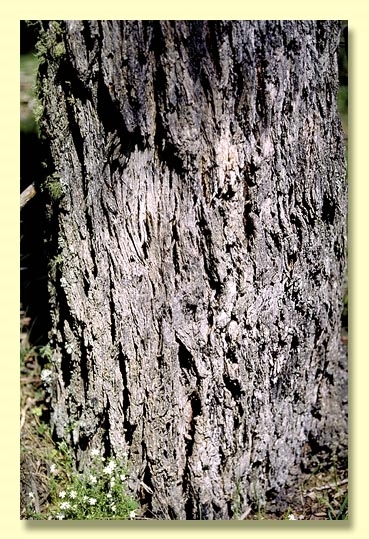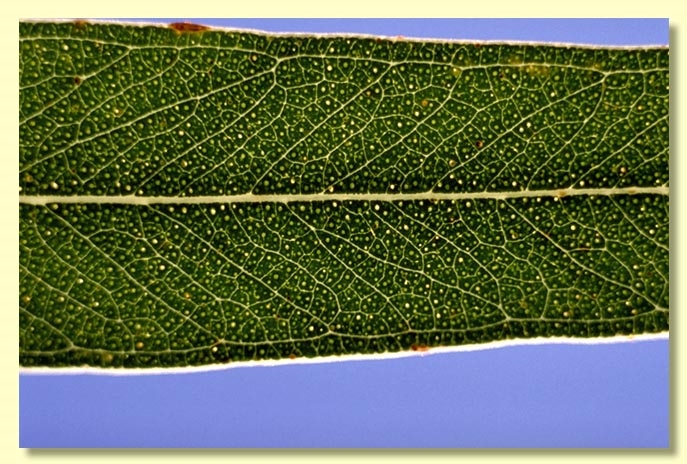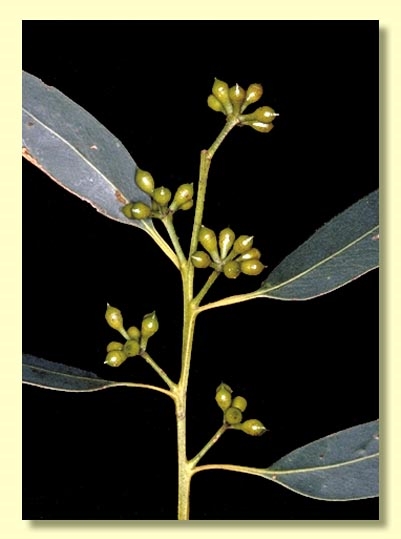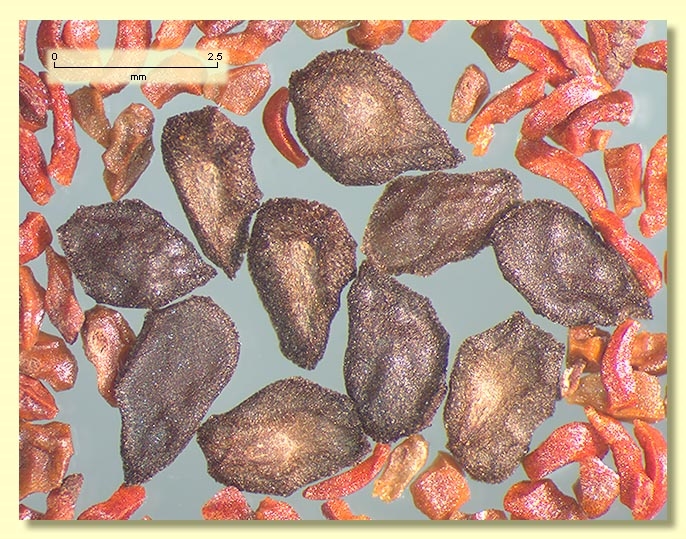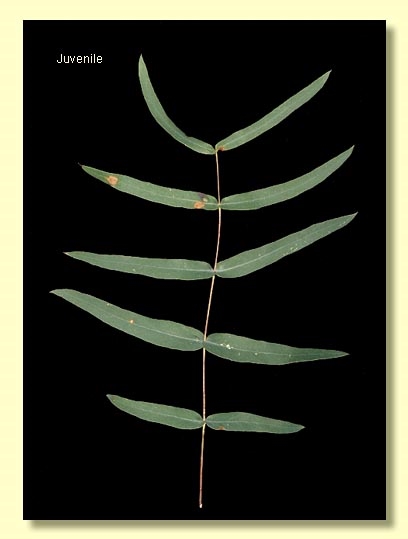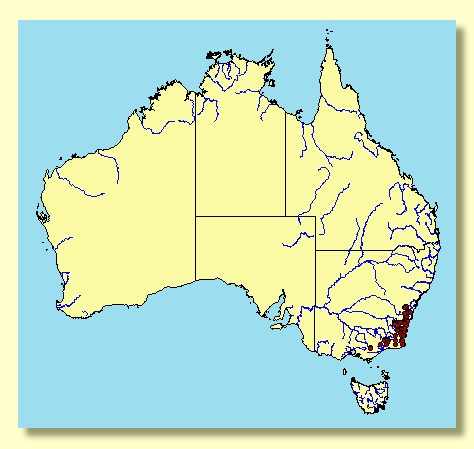Euclid - Online edition
Eucalyptus smithii
Eucalyptus | Symphyomyrtus | Maidenaria | Euryotae | Compactae | Arrectae
E. viminalis var. pedicellaris F.Muell. ex Deane & Maiden, Proc. Linn. Soc. New South Wales 26: 141 (1901). T: Sugar Loaf Mtn, NSW, Aug. 1898, W.Bäuerlen s.n.; lecto: NSW, fide J.H.Maiden, Crit. Revis. Eucalyptus 2: 77 (1910); isolecto: K, MEL.
Bark of trees rough, compact and black on trunk, smooth above, sometimes powdery, white, cream, or green-brown, very ribbony; mallees usually smooth throughout.
Juvenile growth (coppice or field seedlings to 50 cm): stem rounded in cross-section, smooth or slightly warty; juvenile leaves opposite and sessile to early sapling stage, lanceolate, often narrowly so, 5–11 cm long, 0.6–2.5 cm wide, base stemclasping, margin entire (or weakly subcrenulate), green or grey-green.
Adult leaves alternate, petiole 0.5–2.8 cm long; blade narrowly lanceolate to falcate, 6–21 cm long, 0.7–1.6 cm wide, base tapering to petiole, concolorous, slightly glossy, green, side-veins greater than 45° to midrib, moderately to densely reticulate, intramarginal vein parallel to and just within margin or remote from it, oil glands mostly island.
Inflorescence axillary unbranched, peduncles 0.5–1.3 cm long, buds 7 per umbel, pedicels 0.1–0.6 cm long. Mature buds diamond-shaped to obovoid, 0.4–0.6 cm long, 0.3–0.4 cm wide, green or red-brown, smooth, scar present, operculum conical to beaked, stamens inflexed, anthers cuboid to oblong, versatile, dorsifixed, dehiscing by longitudinal slits (non-confluent), style long, stigma blunt or tapered, locules 3, the placentae each with 4 vertical ovule rows. Flowers white.
Fruit on pedicels 0.1–0.6 cm long, rarely sessile, cup-shaped, campanulate or hemispherical, 0.3–0.6 cm long, 0.4–0.8 cm wide, disc strongly raised, oblique or convex, valves 3, strongly exserted.
Seeds black, brown or grey, 1–2.7 mm long, ovoid or flattened-ovoid, often pointed at one end, usually lacunose, dorsal surface smooth or shallowly reticulate, hilum ventral.
Cultivated seedlings (measured at ca node 10): cotyledons bilobed to oblong; stems rounded in cross-section, slightly glaucous or non-glaucous; leaves sessile and opposite for many nodes, narrowly lanceolate, 3.5–6 cm long, 0.8–2.2 cm wide, stem-clasping or base tapering, margin entire or weakly subcrenulate, apex pointed, discolorous, green to grey-green, paler beneath; leaves rarely slightly glaucous.
Flowering has been recorded in January and May.
A medium-sized to tall forest tree occurring on the eastern side of the Central and Southern Tablelands of New South Wales, south from Mount Colong west of Burragorang, and nearer the coast in far south-eastern New South Wales and far eastern Victoria, south of Eden to the Howe Range; or rarely occurring as a mallee in mountains in eastern Victoria, e.g. Little River Gorge, Mt Dawson, Black Range and east of Mt Useful.
Bark of Eucalyptus smithii is rough, compact (kino-impregnated) over most of trunk, smooth and ribbony above, or completely smooth in the mallee form. Leaves are green and prominently glandular; inflorescences are seven-budded, with pedicellate, diamond-shaped to obovoid buds with inflexed stamens; fruit notably have a steeply ascending disc and valves are exserted. In habit, bark, and crown, and in general distribution, E. smithii resembles E. badjensis, which is strictly three-budded, and also E. elata, which always has more than seven buds per cluster and which lacks the operculum scar seen in the mature buds of other two species. Juvenile leaves of E. smithii are like those of E. viminalis, which differs in having fibrous rough bark, ovoid buds and the far less conspicuous disc of the fruit.
Eucalyptus smithii belongs in Eucalyptus subgenus Symphyomyrtus section Maidenaria, a large group of species more or less restricted to south-eastern Australia, characterised by bilobed cotyledons, simple axillary inflorescences, buds with two opercula, stamens with versatile anthers and flattened seeds with a ventral hilum. Within section Maidenaria, E. smithii and E. badjensis form series Compactae, distinguished by the character of the basal bark and juvenile leaves.



